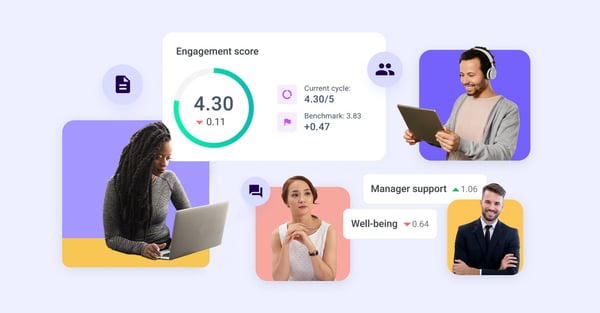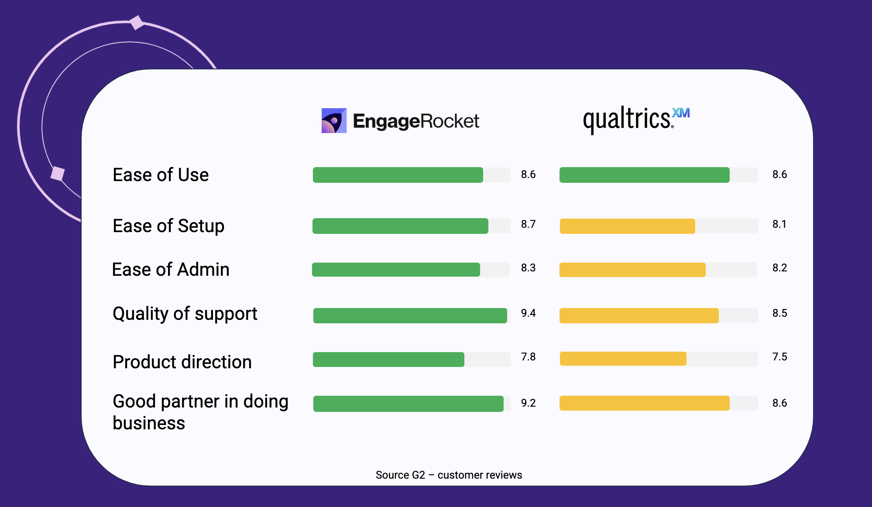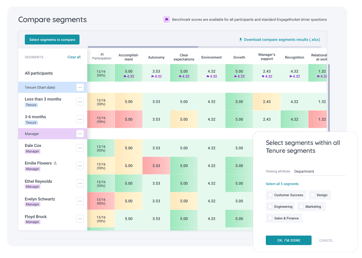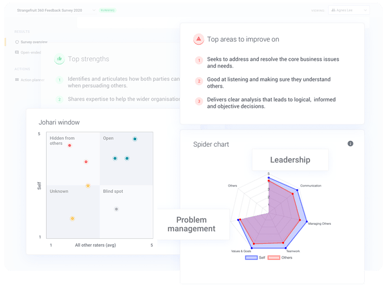To create an elite organization, you need a well-planned strategy to keep your employees engaged and happy, majorly focused on the following three aspects:
✅ Continuous listening
✅ Sustainable action
✅ Advanced analytics
These three pillars work together to create a workplace with a culture of engagement, adaptability, and alignment with organizational goals. Let’s explore them in detail.
Continuous Listening
The foundation of an effective engagement strategy, continuous listening, involves actively gathering feedback from employees through various channels
Now, why is this so important? Well, when you listen continuously, you gain valuable insights into what drives employee engagement and satisfaction. This way, you know what they need and how they feel about working in your organization. Consequently, your organization can identify areas of concern, see new trends coming up, and fix issues before they turn into huge problems.
Note that this information evolves as the organization grows and faces new challenges. So, continuous listening keeps you agile, which is crucial these days as businesses are changing rapidly.
Sustainable Action
Pairing the potency of continuous listening with sustainable action elevates its impact.. It needs a commitment to follow through on the feedback received. As a sustainable action, you must let your managers take ownership of team engagement.
Equipped with the right tools, knowledge, and autonomy, managers can effectively address employee feedback. With automated action plans based on employee experience data, managers become instrumental in catalyzing changes, recognizing commendable efforts, and fostering a milieu where employees are perennially motivated to excel.
When significantly empowered, managers can set clear goals, implement changes, and regularly assess progress. They can also tweak employee engagement strategies that fit the company's needs to create a culture where employees constantly strive to improve.
Advanced Analytics
Connecting employee engagement to business results is key. Using advanced analytics, including predictive and impact analysis, lets us see how engagement affects key performance indicators (KPIs).
For instance, we can see which initiatives improve productivity or reduce turnover. With this data, HR can refine engagement strategies.
Plus, by predicting future engagement trends, organizations can act early to keep their workforce motivated and efficient. .



 HR Teams are at the frontline of implementing these tools. For them, reliability is key. They need a system that doesn't falter, is adaptable to the changing needs of the organization, and is backed by prompt support. Additionally, a rigorous quality control mechanism is essential to ensure that the tool remains effective over time.
HR Teams are at the frontline of implementing these tools. For them, reliability is key. They need a system that doesn't falter, is adaptable to the changing needs of the organization, and is backed by prompt support. Additionally, a rigorous quality control mechanism is essential to ensure that the tool remains effective over time. C-suite Leaders: The top management often looks at the bigger picture. For them, a tool isn't just about gathering feedback—it's about deriving actionable insights that can drive business growth. They prefer a tool that can offer tailored recommendations directly linked to critical business metrics and provides trend analysis to anticipate future needs or challenges
C-suite Leaders: The top management often looks at the bigger picture. For them, a tool isn't just about gathering feedback—it's about deriving actionable insights that can drive business growth. They prefer a tool that can offer tailored recommendations directly linked to critical business metrics and provides trend analysis to anticipate future needs or challenges Managers: Often acting as the bridge between the workforce and the leadership, managers need tools that are straightforward to use. Essential to their workflow is the ability for the solution to integrate seamlessly with platforms they're already familiar with, such as Teams, Slack, and other collaboration tools. They require access to essential data that can help them understand their team's sentiment and dynamics. Beyond just raw data, they benefit from conversation guides that can help navigate sensitive topics. Actionable suggestions provided by the tool can be invaluable for managers, enabling them to take immediate steps to enhance engagement within their teams.
Managers: Often acting as the bridge between the workforce and the leadership, managers need tools that are straightforward to use. Essential to their workflow is the ability for the solution to integrate seamlessly with platforms they're already familiar with, such as Teams, Slack, and other collaboration tools. They require access to essential data that can help them understand their team's sentiment and dynamics. Beyond just raw data, they benefit from conversation guides that can help navigate sensitive topics. Actionable suggestions provided by the tool can be invaluable for managers, enabling them to take immediate steps to enhance engagement within their teams. Employees: Their trust and buy-in are essential for the success of any tool. As such, the tool needs to guarantee confidentiality, ensuring their feedback or data isn't misused. Furthermore, an intuitive and user-friendly interface will make it easier for them to interact with the system, ensuring higher participation rates.
Employees: Their trust and buy-in are essential for the success of any tool. As such, the tool needs to guarantee confidentiality, ensuring their feedback or data isn't misused. Furthermore, an intuitive and user-friendly interface will make it easier for them to interact with the system, ensuring higher participation rates.


.png?width=950&height=356&name=CTA-Banner-Blog%20(1201%20%C3%97%20450px).png)
